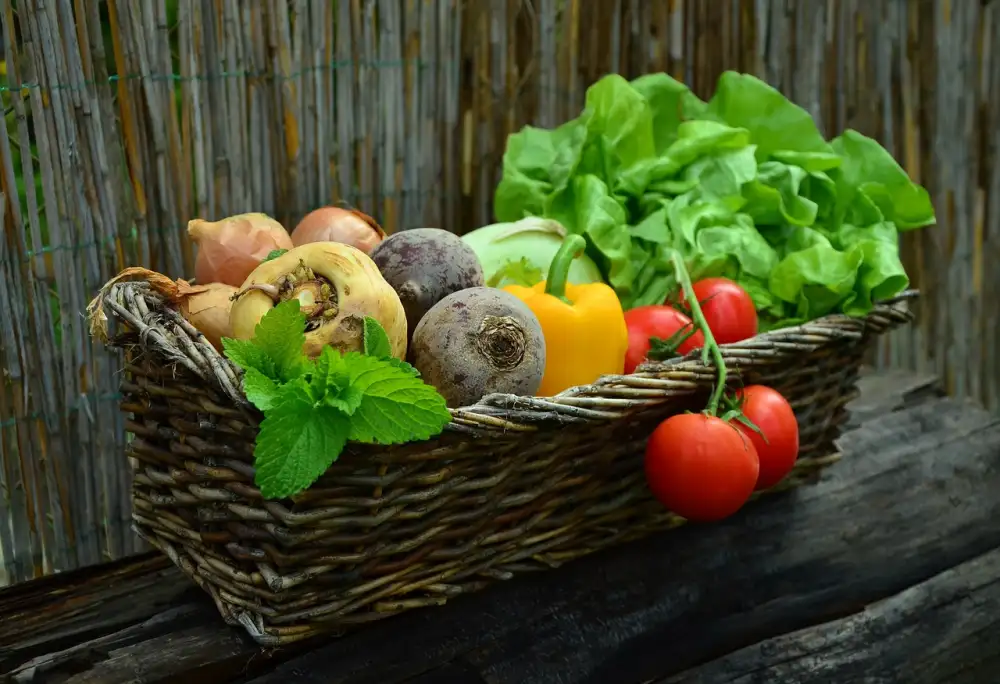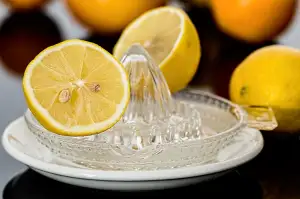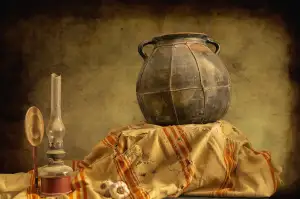Harvesting Rhubarb: Discover the Perfect Time to Pluck this Tangy Delight at Home

Rhubarb, with its vibrant red stalks and tangy flavor, is a delight to harvest and enjoy in various culinary creations. Whether you're a seasoned gardener or new to growing your own produce, learning the art of rhubarb harvesting can be a rewarding experience. In this article, we will explore the ins and outs of harvesting rhubarb, from understanding its growth cycle to knowing the signs of readiness for plucking. So grab your gardening gloves and let's dive into the world of rhubarb!
Understanding Rhubarb Growth Cycle
To successfully harvest rhubarb, it is important to have a good understanding of its growth cycle. Rhubarb is a perennial plant that goes through distinct stages of growth each year.
In the early spring, rhubarb plants emerge from their dormant state as small shoots. These shoots quickly develop into large, leafy plants with thick stalks. During this stage, the plant focuses on building up energy reserves in its roots.
As summer approaches, the rhubarb plant enters its growth phase. The leaves continue to expand, providing energy through photosynthesis to support the development of the stalks. It is during this time that the rhubarb stalks grow long and thick.
After several weeks of growth, the rhubarb plant transitions into its reproductive stage. Flower stalks appear and eventually produce small flowers. It is important to remove these flower stalks promptly as they can divert energy away from the production of edible stalks.
Once the flowering stage has passed, the rhubarb plant begins to slow down its growth and focus on storing energy for the following year. The leaves may start to turn yellow or brown, indicating that the plant is preparing for dormancy.
Understanding these different stages of rhubarb's growth cycle will help you determine when it is best to harvest your crop. By observing the signs of readiness for harvest and using proper techniques for harvesting, you can ensure a bountiful yield of this tangy delight from your own backyard garden.
Signs of Rhubarb Readiness for Harvest
Before you start plucking rhubarb stalks from your garden, it's essential to know when the plant is ready for harvest. Luckily, there are a few signs that indicate the perfect time to pick this tangy delight.
Firstly, look for stalks that are thick and firm. Mature rhubarb stalks should be about 1 inch in diameter and have a sturdy feel when gently squeezed. Avoid harvesting thin or floppy stalks as they may not have reached their full potential.
Secondly, pay attention to the color of the stalks. The ideal rhubarb is vibrant and has a deep red hue. However, some varieties may have green or pinkish stalks, which are also acceptable for harvest. Avoid picking rhubarb with pale or yellowish stems as they may not be fully matured.
Lastly, check the leaves of the plant. While you won't be consuming them (as they are toxic), healthy and large leaves indicate a robust plant that is likely ready for harvest. If the leaves appear small or weak, it might be best to wait a little longer before harvesting.
By observing these signs, you can ensure that your rhubarb is at its peak flavor and texture when harvested. So keep an eye out for thick and firm stalks with vibrant colors and healthy leaves before reaching for your gardening tools!
Best Time to Harvest Rhubarb
The best time to harvest rhubarb is in the late spring or early summer, typically around April or May. This is when the stalks are at their peak flavor and tenderness. It's important to wait until the plant has fully established itself before harvesting, which usually takes about two years after planting. Harvesting too early can weaken the plant and affect future growth. So, be patient and allow your rhubarb to reach its full potential before plucking those tangy delights from your garden!
Proper Techniques for Harvesting Rhubarb
When it comes to harvesting rhubarb, it's important to use the right techniques to ensure a successful harvest. Here are some tips to help you pluck this tangy delight at its prime:
1. Use a sharp knife or garden shears: To avoid damaging the plant, use a sharp knife or garden shears to cut the stalks. Make sure to sanitize your tools before and after each use.
2. Cut at the base: Locate the base of the stalk where it meets the crown of the plant. Gently pull on the stalk and cut it close to the ground. Avoid twisting or yanking as this can harm the plant.
3. Harvest mature stalks: Only harvest mature stalks that are at least 10-12 inches long and about an inch in diameter. These will be thick and firm, indicating they are ready for picking.
4. Leave smaller stalks intact: Allow smaller stalks to continue growing as they contribute to future harvests. This will ensure a healthy and productive rhubarb patch for years to come.
5. Remove leaves immediately: After harvesting, remove the leaves from the stalks as they contain toxic levels of oxalic acid. Dispose of them properly, away from pets or livestock.
By following these proper techniques, you'll be able to harvest rhubarb without causing harm to your plants and enjoy its tangy flavor in various culinary delights!
Storing and Preserving Freshly Harvested Rhubarb
Once you have harvested your rhubarb, it's important to store it properly to maintain its freshness and flavor. Start by removing any leaves, as they are toxic and should not be consumed. Rinse the stalks under cold water to remove any dirt or debris.
To store rhubarb in the refrigerator, wrap the stalks loosely in a damp paper towel and place them in a plastic bag. This will help keep them moist without becoming soggy. Rhubarb can stay fresh for up to two weeks when stored this way.
If you want to preserve your freshly harvested rhubarb for a longer period, consider freezing it. Begin by cutting the stalks into small pieces or slices. Blanching is recommended before freezing to help retain its color and texture. Simply blanch the rhubarb in boiling water for 1-2 minutes, then transfer it immediately into an ice bath to stop the cooking process.
Once blanched, drain the rhubarb thoroughly and pack it into freezer-safe containers or bags. Make sure to remove as much air as possible before sealing them tightly. Frozen rhubarb can last up to a year if stored at 0°F (-18°C) or below.
By properly storing and preserving your freshly harvested rhubarb, you can enjoy its tangy delight all year round in various culinary creations such as pies, jams, sauces, and more!
Tips for Maximizing Rhubarb Yield
To maximize your rhubarb yield, there are a few tips you can follow. First, make sure to regularly remove any flower stalks that appear. This will divert the plant's energy towards producing more edible stalks. Additionally, avoid overharvesting by only plucking about one-third of the stalks at a time. This allows the plant to continue growing and replenishing itself. Finally, remember to fertilize your rhubarb plants in early spring and provide adequate water throughout the growing season. By following these tips, you'll be able to enjoy a bountiful harvest of tangy rhubarb all season long.
Harvesting rhubarb is a rewarding experience that allows you to enjoy the tangy delight of this versatile plant. By understanding the growth cycle and signs of readiness, you can ensure a bountiful harvest. Remember to use proper techniques when plucking the stalks, being careful not to damage the plant. Once harvested, store and preserve your rhubarb properly to extend its shelf life. With these tips in mind, you can maximize your yield and savor the flavors of freshly harvested rhubarb in a variety of culinary creations. So go ahead, dive into the world of rhubarb and let your taste buds rejoice!
Published: 18. 12. 2023
Category: Home



